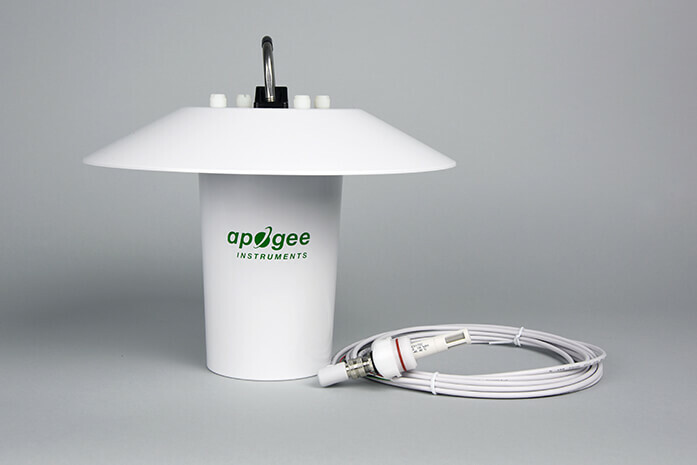My big project for the summer of 2021 is adding a fan aspirated radiation shield to my setup. My primary shield – the Barani MeteoShield Pro – is a superb product, but a passive shield it remains. It suffers from overheating in windless conditions. Those conditions do not occur too often at my location, but when they do I’m looking at temperature overestimations that can sometimes exceed 1 degree celsius for a period if solar radiation is strong enough.
There are several fan aspirated shields to choose from. The first obvious option is the Davis 24 hour FARS. Obvious, because I’m already using Davis products. At the same time, I’ve been hesitant to opt for this expansion of my Davis Vantage Pro 2 setup. The Davis FARS is specifically designed for their SHT31 sensor. This is a sensor I replaced with Arduino controlled SHT35 sensors last winter. Also, I’ve not been impressed with the performance of the Davis radiation shield, especially compared to the aforementioned Barani, for which I have about a year of data right now. It consistently underperforms, also when comparing it to the Davis 7714 shield alternative. I realize passive performance is not an indication of what you can expect with constant aspiration from a fan, especially since the fan upgrade involves changes to the air flow inside the shield. But I can’t shake the feeling I’d be starting from a bad position to begin with. More importantly, according to the specs, the maximum air flow in the sensor chamber is only 2.5 m/s under peak solar radiation. This is a lot less than some alternatives.
Alternatives I have looked at are the R.M. Young 43502-L, the Met One 076B and the Apogee Instruments TS-100. As the title of the blog suggests, I went for the latter. This has little to do with an extensive comparison of the three. The TS-100 quickly became the front runner because of the low power usage of the fan. At maximum power it only uses 80 mA. Solar panels have been my only source of power. The other two fans draw 250 mA (Met One) and 500 mA (R.M. Young), which is simply not viable as a solar powered setup one the scale I have in mind. Also, the R.M. Young has the downside that is has no room for sensors with a larger diameter than 1 cm. The Apogee, on the other hand, can facilitate all kinds of diameters, including the SHT35 sensor probe I have been using in my Barani shields.

I will admit that the fact that I was able to find some community reviews for the TS-100 at all helped seal the deal. The Italian website KWOS.org has a TS-100 running and a useful review. At the Meteonetwork forum (also Italian) some interesting considerations can be found in this topic in regards to the accuracy of artificial aspiration under certain weather conditions. Since the speed of the Apogee fan can be controlled, the question arises how fast it should run under which conditions. I will be doing a lot of comparing once the TS-100 is installed.
My plan is to write a series of blogs covering preparations for its installation as well as observations and tweaks to the fan controller based on results. Ground I will certainly cover is the power supply, mounting solution, controller hardware and code.
I mentioned solar power above. After some thought – this took a few months really – I decided to drop that approach with this project. I am too unsure if I can properly supply the fan and controller – which will be a Wemos D1 Mini – as well as the sensor and its controller and store enough power during the winter months to keep it all going. So I decided to run a cable through the ground to supply my weather station with 24 volts dc so I won’t have to bother with troublesome solar power supplies for this and future projects anymore. More on this in the next blog.